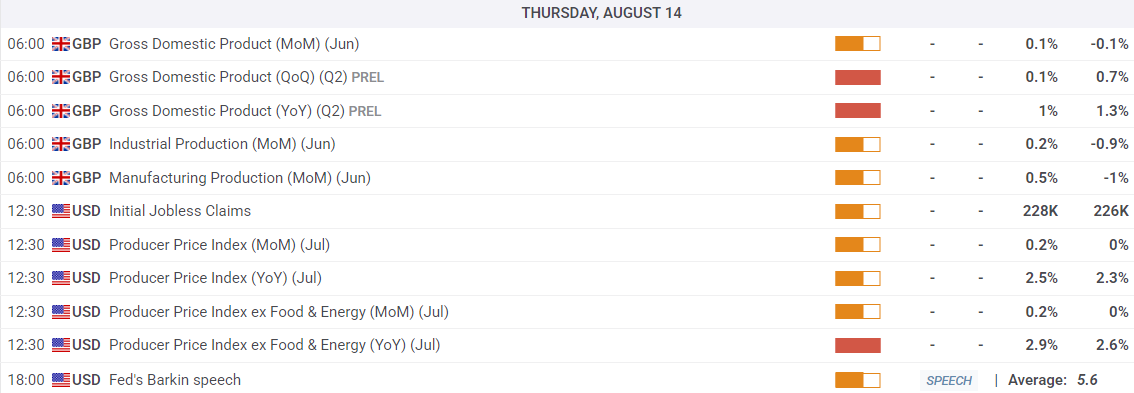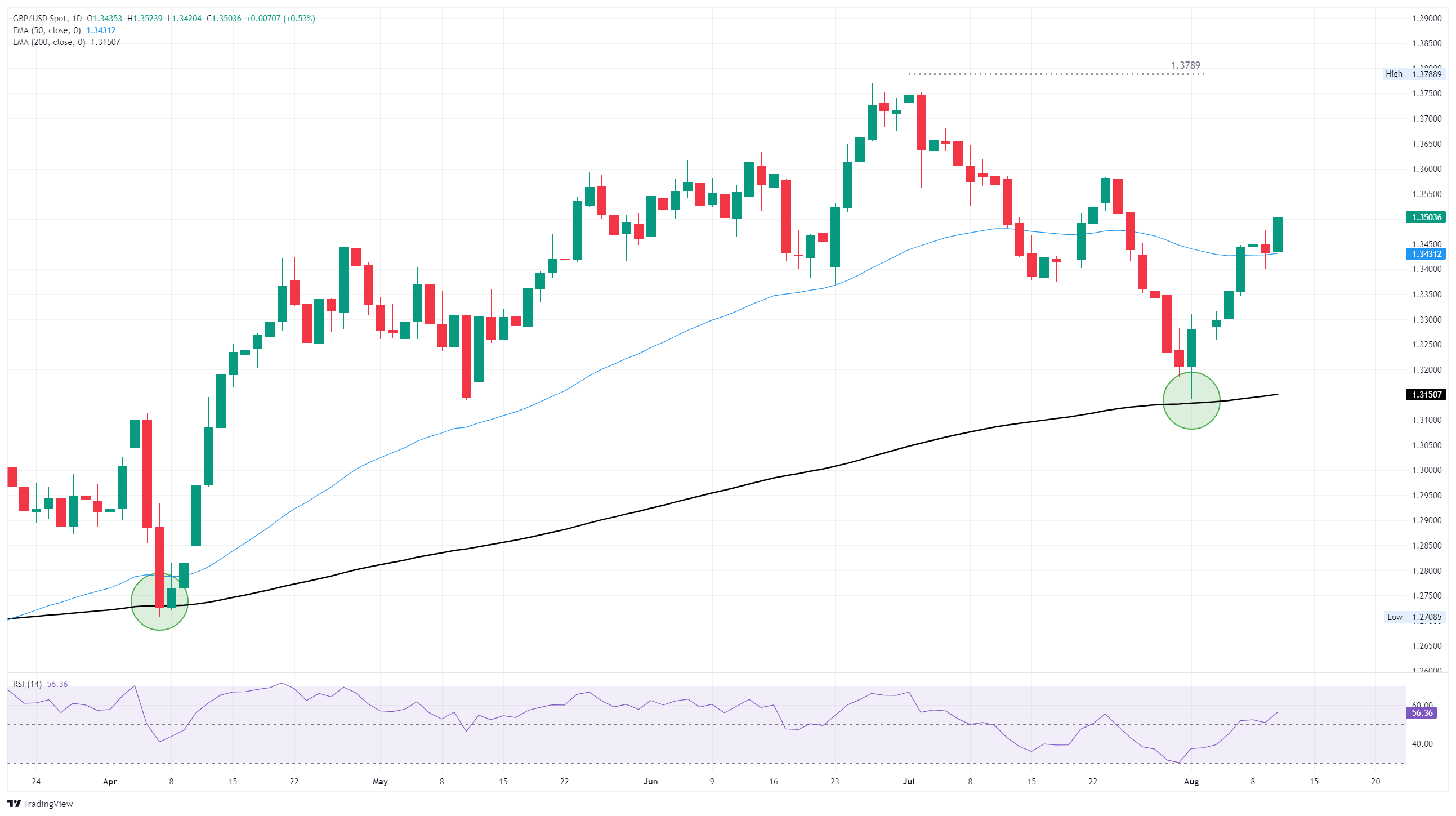- GBP/USD gained ground on Tuesday, climbing after a one-two punch of UK labor data and US inflation.
- Wednesday is a thin showing on the economic data docket.
- Thursday returns with another double-header of UK and US data releases.
GBP/USD gained ground on Tuesday, climbing around one-half of one percent after economic releases from both the United Kingdom (UK) and the United States (US) tilted the scales in favor of the Pound Sterling (GBP) over the US Dollar (USD).
UK labor data broadly came in better than expected, with the number of new unemployment benefits seekers declining by 6.2K versus the expected 20.8K addition. Average Earnings also rose slower than expected, helping to trim the top off of inflation expectations. On the US side, Consumer Price Index (CPI) inflation data from July showed a complete lack of improvement, but still came in cool enough to keep market expectations of a September interest rate cut on the rails.
Wednesday brings a lull to the economic calendar, with little of note on the data docket. Thursday will see another round of double-header UK/US economic releases, starting with quarterly UK Gross Domestic Product (GDP) growth. UK GDP growth is expected to slow in the second quarter to just 0.1% QoQ, bringing the annualized figure down to 1.0% from 1.3%.
Thursday’s data docket on the US side of the Atlantic will the next round of weekly Initial Jobless Claims, but the key US datapoint will be Producer Price Index (PPI) inflation. Annualized PPI inflation is expected to rise to 2.9% YoY from 2.6%.

GBP/USD price forecast
Cable’s bullish extension on Tuesday has bolstered GBP/USD bids back above the 50-day Exponential Moving Average (EMA) near 1.3430, sending intraday price action back above the 1.3500 handle for the first time in three weeks. GBP/USD buyers are continuing to pare back losses from the latest swing low, but the last swing high into the 1.3600 region still lies ahead as a technical ceiling.
GBP/USD daily chart

Pound Sterling FAQs
The Pound Sterling (GBP) is the oldest currency in the world (886 AD) and the official currency of the United Kingdom. It is the fourth most traded unit for foreign exchange (FX) in the world, accounting for 12% of all transactions, averaging $630 billion a day, according to 2022 data.
Its key trading pairs are GBP/USD, also known as ‘Cable’, which accounts for 11% of FX, GBP/JPY, or the ‘Dragon’ as it is known by traders (3%), and EUR/GBP (2%). The Pound Sterling is issued by the Bank of England (BoE).
The single most important factor influencing the value of the Pound Sterling is monetary policy decided by the Bank of England. The BoE bases its decisions on whether it has achieved its primary goal of “price stability” – a steady inflation rate of around 2%. Its primary tool for achieving this is the adjustment of interest rates.
When inflation is too high, the BoE will try to rein it in by raising interest rates, making it more expensive for people and businesses to access credit. This is generally positive for GBP, as higher interest rates make the UK a more attractive place for global investors to park their money.
When inflation falls too low it is a sign economic growth is slowing. In this scenario, the BoE will consider lowering interest rates to cheapen credit so businesses will borrow more to invest in growth-generating projects.
Data releases gauge the health of the economy and can impact the value of the Pound Sterling. Indicators such as GDP, Manufacturing and Services PMIs, and employment can all influence the direction of the GBP.
A strong economy is good for Sterling. Not only does it attract more foreign investment but it may encourage the BoE to put up interest rates, which will directly strengthen GBP. Otherwise, if economic data is weak, the Pound Sterling is likely to fall.
Another significant data release for the Pound Sterling is the Trade Balance. This indicator measures the difference between what a country earns from its exports and what it spends on imports over a given period.
If a country produces highly sought-after exports, its currency will benefit purely from the extra demand created from foreign buyers seeking to purchase these goods. Therefore, a positive net Trade Balance strengthens a currency and vice versa for a negative balance.

